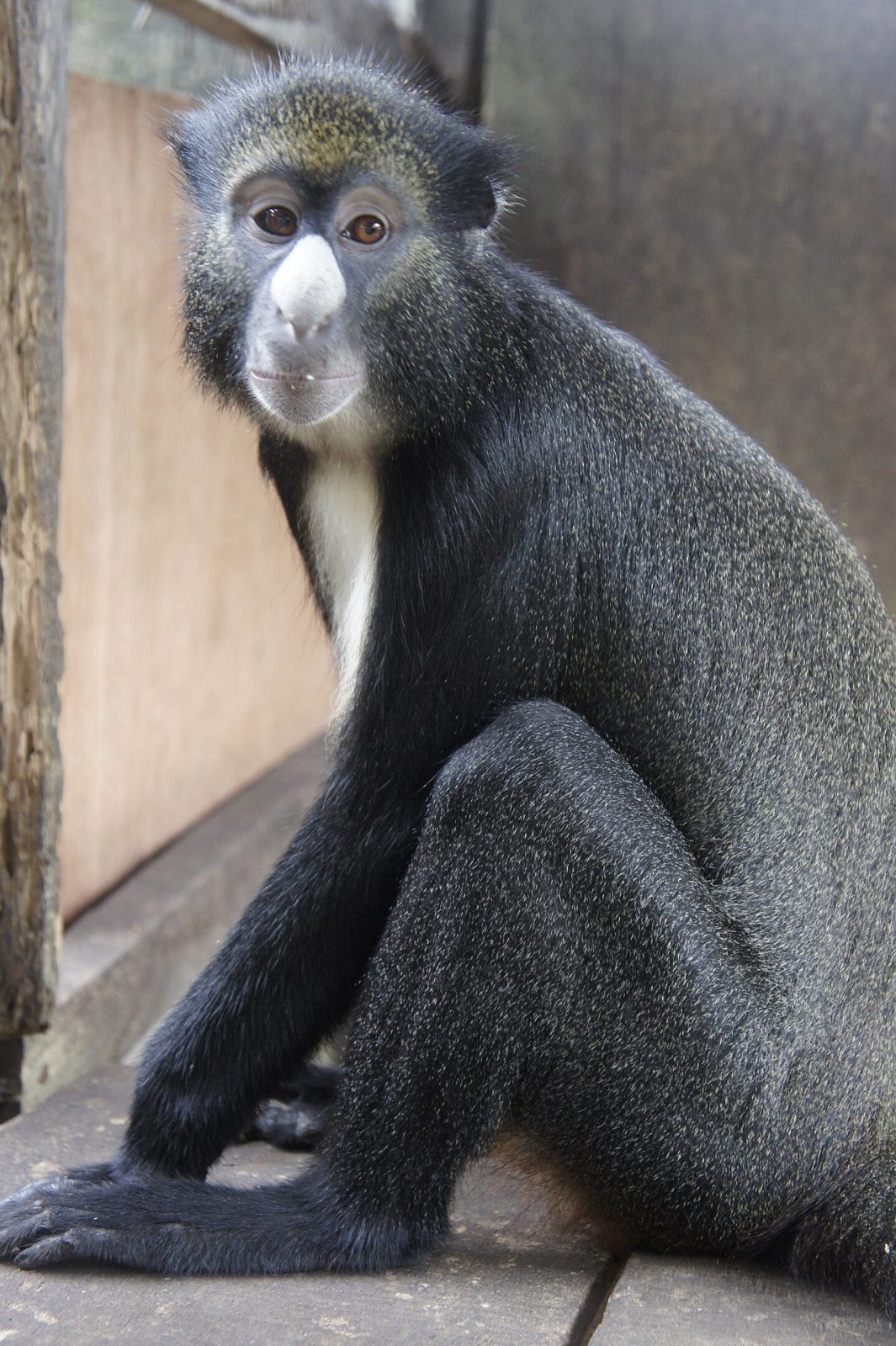
Greater spot-nosed monkey
Also known as Putty-nosed monkey, this species is one of the smallest old world monkeys and lives in west Africa. While they are a rainforest species, they are often found on the transition boundary between forest and savannah.
It is usually found in the treetops, and as with many other monkey species, they will often spend time in groups of monkeys from a variety of species – which gives all species an advantage. By eating and browsing in mixed species groups, there are a variety of advantages – each species specializes in specific foods – be it leaves, fruit, branches or grass. By only having a few of their own species that they are with, there is more food for each individual, yet there are still many eyes looking out for danger. Furthermore, by being a variety of species, you can have antelope, small monkeys, big monkeys and others like birds or squirrels.
This species consume mostly fruit (frugivorous), but also eat a lot of seeds. Apart from this, they eat insects, leaves, nuts, flowers as well as occasionally raiding crops planted by humans. They did have a cheek-pouch, made out of well-developed cheek muscles, which is highly stretchy, they can store almost as much in this cheek pouch, as they can in their stomach. They can hold food in there for quite some time, so that they can snack on it later.
They live in groups, which consist of one fully-grown male, and a number of adult females, along with their dependent offspring. While studies on their behaviour remain a bit lacking, a great deal has been done in examining the noises that they can make. Generally, male sounds are split into boo,s, pyows, and hacks. They use these sounds to communicate specific things, such that an alarm call will tell everything listening, which predator is the threat (this is important: should the predator be a predator on the ground all of the monkeys will climb higher, should chimpanzees attack the monkeys will want to climb into the treetops, where the branches are unlikely to support a chimpanzee, but if it is a large bird of prey, smaller monkeys can be taken, so it would be important to move lower in the tree. Apart from rudiment words (sounds) for specific threats, they are also capable of stringing them together to make something that we might call a sentence (5 arboreal predator, coming towards us, getting close).
Thought to live around 20 years in the wild, in captivity, they have been known to live to over 30 years. As a result of how often they emit alarm calls, they are sometimes referred to as the cowardly monkey. They are primarily preyed upon by hawks and wild cats.
They are listed as near threatened by the IUCN (last revision in 2016). The main threat is as a result of widespread heavy hunting pressure. Alongside this, loss of habitat, and degradation of forest not cut down, Unfortunately, due to the growing human population in the area, it is not thought that this threat will decline in the near future. They think that over the next 3 generations of the monkeys (that is about 9 years a generation) the decline in population will be 20-25%. It should be noted, that this projection was made back in 2003, which means that it is only 6-7 years from the end of the period, I have seen no conclusion about how they have done.
They occur in several protected areas, including Monte Alen National park (Equatorial Guinea) and Mbam Djerem National Park (Cameroon), among others. This is encouraging, as while we are greatly hoping that much rainforest outside reserves will survive (it is questionable whether the world can cope with the rest being cut down) if the species can survive with relatively healthy populations, purely on their national park population, they are in a better position than many places.